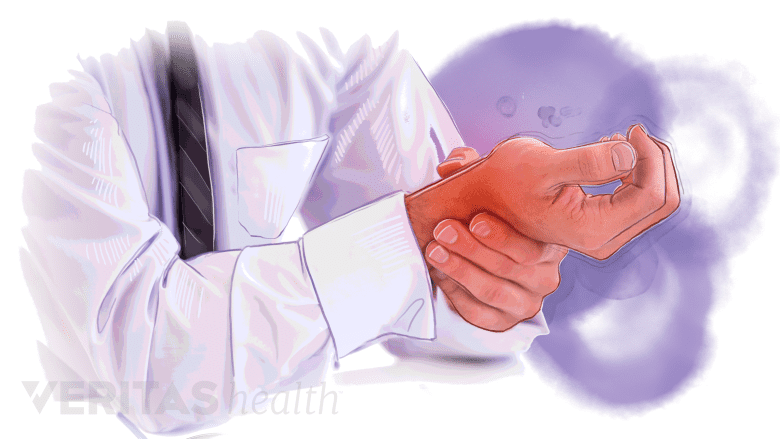The process of diagnosing cervical radiculopathy typically involves a physical examination and review of the patient history. For cases that are more complicated or severe, and for the confirmation of the exact etiology of the symptoms, imaging studies and other advanced diagnostics may be needed.
In This Article:
Patient History and Physical Exam
When a person presents with suspected cervical radiculopathy, such as pins-and-needles tingling, weakness, or numbness in the shoulder, arm, and/or hand, the doctor will likely start with the following:
Patient history
A comprehensive medical history is an important step to diagnose cervical radiculopathy.
Information is gathered regarding current signs and symptoms, any prior or current illnesses or conditions, accidents or injuries, family history, and lifestyle. This medical background can help give a better picture of what might need further investigation.
See Diagnostic Processes for Neck and Back Pain
Physical exam
A physical exam is performed to check for any abnormalities and tenderness.
The neck is palpated (felt) for any abnormalities or tenderness. The arm and hand are tested for any reductions in strength, sensation, or reflexes. Head and neck range of motion are also checked.
Spurling’s test
As part of the physical exam, Spurling’s test enables the doctor to see if compressing the cervical spine can reproduce or (temporarily) worsen the patient’s radicular symptoms. This test is typically done by having the patient bend the head to the side where symptoms have occurred, and then the doctor gently applies pressure to the top of the head. This process will cause the cervical foramen—bony openings in the spine where nerve roots exit—to compress and narrow, which might have the effect of compressing a nerve root and reproducing the radicular symptoms that the patient has been experiencing. If Spurling’s test reproduces the patient’s radicular symptoms, cervical radiculopathy is likely present. Although, it is common for cervical radiculopathy to still be present even if Spurling’s test does not reproduce the symptoms.
Patients who are already showing signs of cervical myelopathy (compression of the spinal cord) or started having radicular symptoms after a traumatic injury (and thus might have a fracture) should not be given Spurling’s test.
A positive Spurling’s test is usually enough to safely start a nonsurgical treatment program for cervical radiculopathy.
Advanced Diagnostic Techniques
In some cases, especially if signs and symptoms have not been subsiding with conservative treatment, advanced diagnostic techniques might be requested, such as:
Imaging studies
An MRI scan is a useful diagnostic tool to diagnose cervical radiculopathy.
Imaging of the body may show how a cervical herniated disc or bone spur is impeding a nerve root in the neck. Magnetic resonance imaging (MRI) is the most common imaging study used when checking for cervical radiculopathy because it shows nerves and other soft tissues, such as herniated discs, so clearly. For people who cannot have an MRI for medical reasons, or if a better image of the bones is needed, an x-ray or CT scan may be advised.
Electrodiagnostic testing
Electromyography monitors muscle and nerve function by tracking electrical activity in muscles.
These types of tests check how nerves are functioning. Two components of electrodiagnostic tests include:
- Electromyography (EMG), which can check nerve and muscle function as well as nerve communication with muscle fibers by monitoring electrical activity in the muscle
- Nerve conduction studies (NCS), which check whether nerves are sending signals at an appropriate speed
Imaging studies can be expensive, and electrodiagnostic testing can be uncomfortable. So these diagnostic methods tend to only be used if needed to help reach a diagnosis.
Differential Diagnosis
Carpal tunnel syndrome can manifest symptoms of hand tingling and numbness similar to cervical radiculopathy.
Several other conditions have signs and symptoms similar to cervical radiculopathy, so getting an accurate diagnosis is important. For example, cervical radiculopathy involves nerve inflammation in the neck whereas carpal tunnel syndrome involves nerve entrapment in the wrist, yet both can have similar hand tingling and numbness symptoms. Distinguishing between the two is important in selecting a treatment plan that targets the actual source of the problem.










